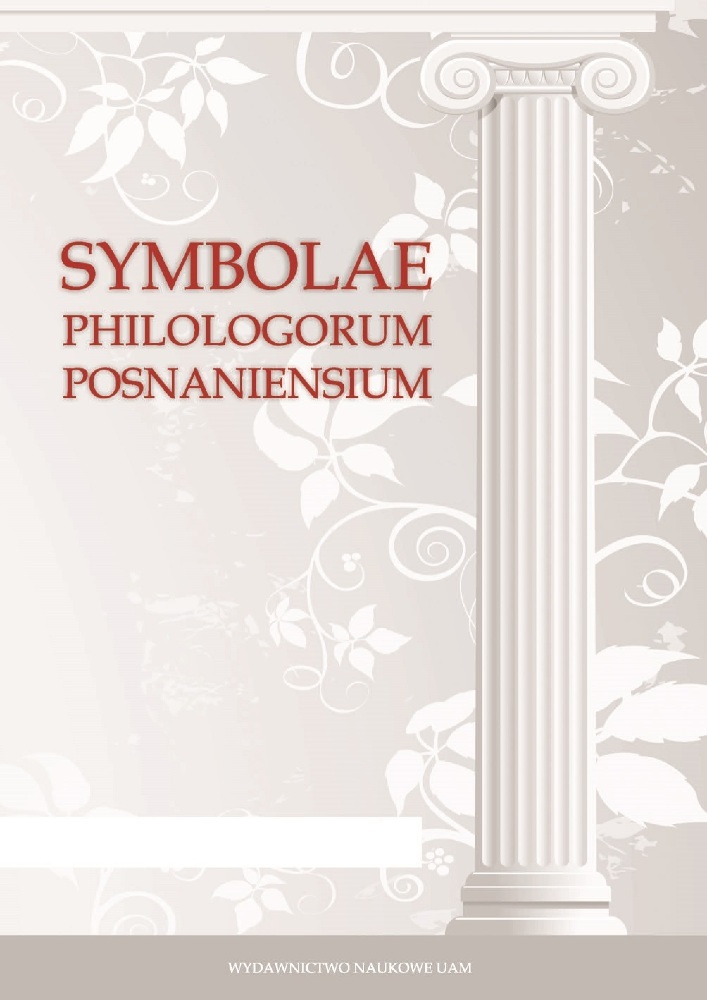Abstract
Ancient numeracy is reasonably well attested in scientific sources. However, any study of applied mathematics faces the problem of a dearth of evidence. The paper suggests that the jokes collected in the “Philogelos” provide such evidence, and discusses the failings which are referred to in these jokes.
Literaturhinweise
Baldwin 1983: Baldwin, B. 1983. The Philogelos or Laughter-Lover. Amsterdam: Gieben.
Beard 2014: Beard, M. 2014. Laughter in Ancient Rome. Berkeley and Los Angeles: University of California Press.
Bremmer and Roodenburg 1997: Bremmer, J. and Roodenburg, H. (eds.). 1997. A Cultural History of Humour. Cambridge: Polity.
Brodersen 2016: Brodersen, K. 2016. Philogelos. Antike Witze, griechisch und deutsch. Wiesbaden: Marix.
Brodersen 2017: Brodersen, K. 2017. “Witze mit langer Leitung.” In Witz, Satire, Ironie. Ed. by R. Kussl, 111–19. Stamsried: Vögel.
Cantor 1922: Cantor, M. 1922. Vorlesungen über Geschichte der Mathematik, vol. I, 4th ed. Leipzig: Teubner.
Crompton 2010: Crompton, D. 2010. A Funny Thing Happened on the Way to the Forum. London: Michael O’Mara.
Crone 2003: Crone, P. 2003. Pre-Industrial Societies: Anatomy of the Pre-Modern World, 2nd Edition. London: OneWorld.
Cuomo 2001: Cuomo, S. 2001. Ancient Mathematics. London and New York: Routledge.
Dawe 2000: Dawe, R. D. 2000. Philogelos Munich: Saur.
Finley 1985: Finley, M.I., Ancient History. Evidence and Models. London: Chatto and Windus.
Friedlein 1869: Friedlein, G. 1869. Die Zahlzeichen und das elementare Rechnen der Griechen und Römer. Erlangen: Deichert.
Godley 1920: Godley, A. D. 1920. Herodotus. The Persian Wars, Volume I. London: Heinemann and Cambridge / Mass.: Harvard University Press.
Gow 1884: Gow, J. 1884. A Short History of Greek Mathematics. Cambridge. Cambridge University Press.
Hansen 1998: Hansen, W. 1998. Anthology of Ancient Greek Popular Literature. Bloomington and Indianapolis: Indiana University Press.
Hansen 2001: Hansen, W. 2001. “The Seer and the Computer.” The Classical Bulletin 77.1: 87– 102.
Heath 1921: Heath, T. 1921. A History of Greek Mathematics, 2 vols. Oxford: Clarendon Press.
Henderson 1998: Henderson, J. 1998. Aristophanes. Clouds. Wasps. Peace. Cambridge, Mass.: Harvard University Press.
Horovitz 1905: Horovitz, J. 1905. Spuren griechischer Mimen im Orient. Berlin: Mayer and Müller.
Jennings 2001: Jennings, V. 2001. “Review of Dawe 2000.” Bryn Mawr Classical Review.
Accessed April 2, 2020. https://bmcr.brynmawr.edu/2001/2001-04-05.html.
Lauxtermann 2003: Lauxtermann, M. D. 2003. Byzantine Poetry from Pisides to Geometres, vol. I. Vienna: Verlag der Österreichischen Akademie der Wissenschaften.
Leone 2007: Leone, P. 2007. Tzetzes. Ioannis Tzetzae Historiae. 2nd Edition. Galatina: Congedo 2007.
Manning and Morris 2005: Manning, J. G. and I. Morris (eds.). 2005. The Ancient Economy.
Evidence and Models. Stanford: Stanford University Press.
Marzolph 1987: Marzolph, U. 1987. “Philogelos Arabikos: Zum Nachleben der antiken
Witzesammlung in der mittelalterlichen arabischen Literatur.” Der Islam 64: 185–230.
Nagl 1914: Nagl, A. 1914. Die Rechentafel der Alten Vienna: Hölder.
Nagl 1918: Nagl, A. 1918. “Addenda to ‘Abacus’.” Realencyclopädie der Classischen Altertumswissenschaft Suppl. III: 1–13. Stuttgart: Metzler.
Oxford English Dictionary. 2020. “Gotham.” Accessed April 2, 2020. https://www.oed.com/view/Entry/80222.
Paton et al. 2011: Paton, W. R. / Walbank, F. W. / Habicht, C. 2011. Polybius. The Histories, Volume III. Cambridge, Mass.: Harvard University Press.
Perry 1943: Perry, B. E. 1943. “On the manuscripts of the Philogelos.” In Classical Studies in Honor of William Abbott Oldfather, 157–66. Urbana: University of Illinois Press.
Schärlig 2001: Schärlig, A. 2001. Compter avec des cailloux. Le calcul élémentaire sur l’abaque chez les anciens grecs. Lausanne: Presses polytechniques et universitaires romanes.
Sluiter 1988: Sluiter, I. 1988. “Perversa Subtilitas. De kwade roep van de grammaticus.” Lampas 21: 41–65.
Tannery 1886: Tannery, P. 1886. “Notice sur les deux lettres arithmétiques de Nicolas Rhabdas.” Notices et extraits des manuscrits 32: 121–252.
Tannery 1920: Tannery. P. 1920. Mémoires Scientifiques, vol. IV. Toulouse: Éduard Privat and Paris: Gauthier-Villars.
Thierfelder 1968: Thierfelder, A. 1968. Philogelos. Der Lachfreund von Hierokles und Philagrios. Munich: Heimeran.
Thomas 1939–1941: Thomas, I. 1939–1941. Selections illustrating the history of Greek mathematics, 2 vols. London: Heinemann and Cambridge / Mass.: Harvard University Press.
Trendall and Campitoglu 1982: Trendall, A. D. and Campitoglou, A. 1982. Red Figured Vases of Apulia, vol. II. Oxford: Clarendon Press.
Vogel 1936: Vogel, K. 1936. “Beiträge zur griechischen Logistik, 1. Teil.” Sitzungsberichte der Bayerischen Akademie der Wissenschaften, mathematisch- naturwissenschaftliche Abteilung 1936: 357–472. Munich: C. H. Beck.
Lizenz
